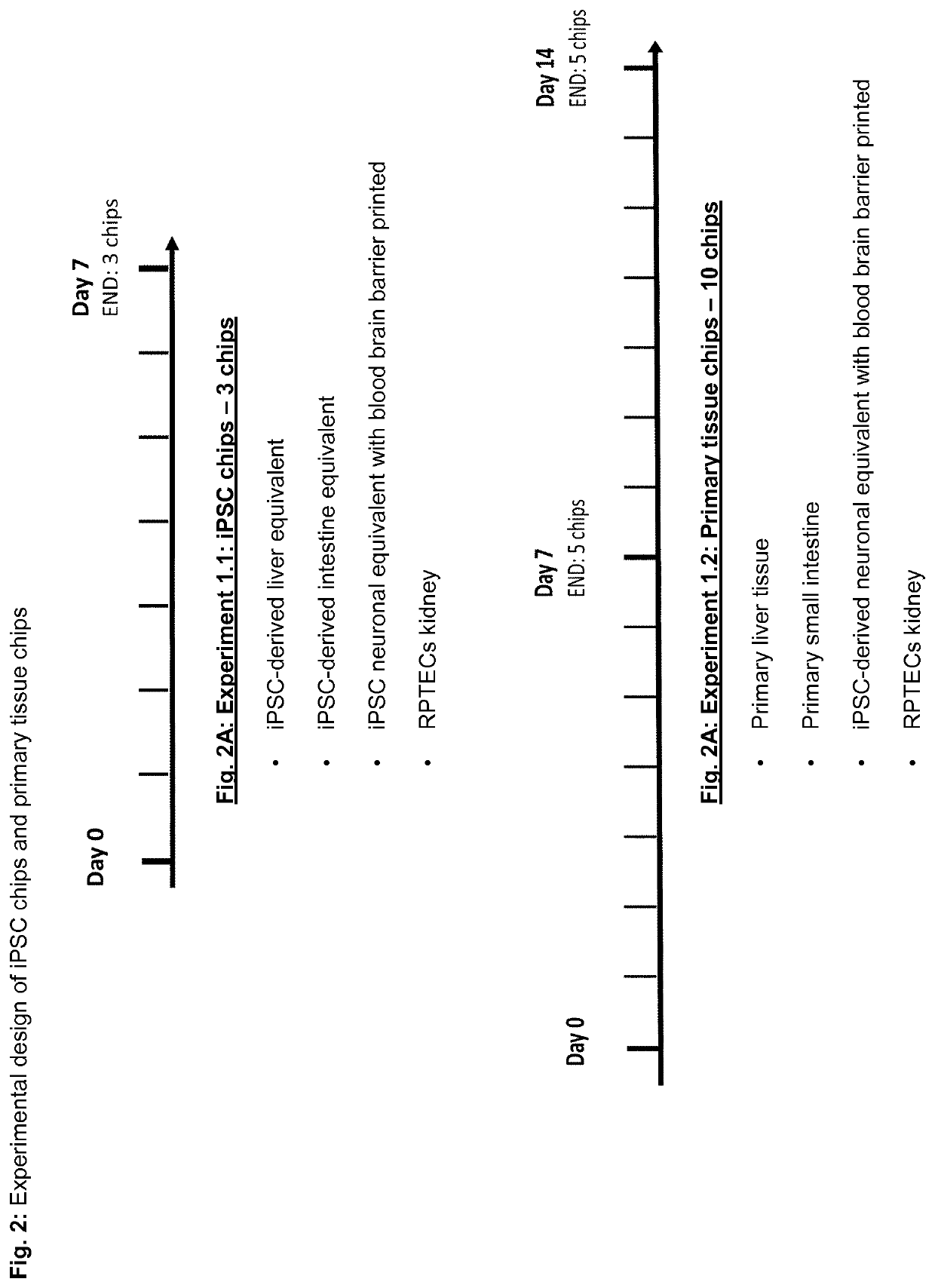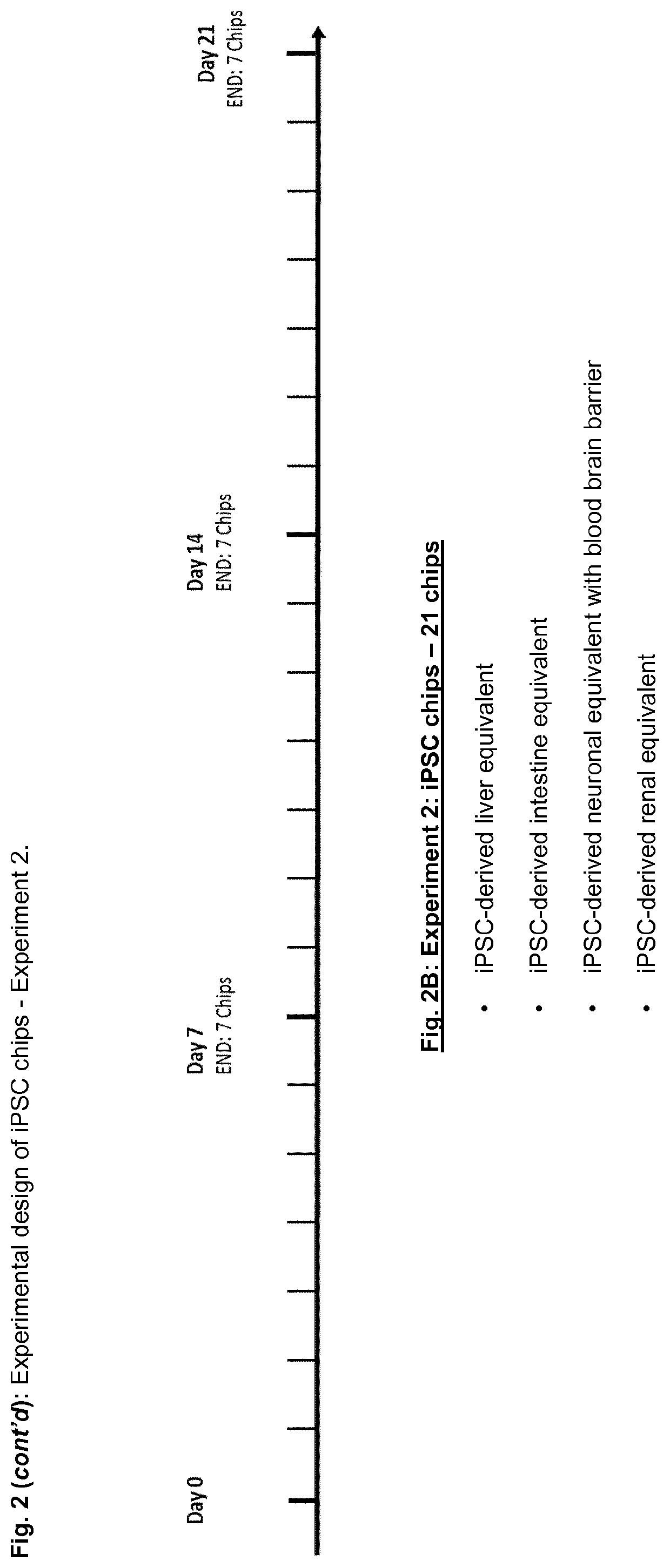Novel multi-organ-chips establishing differentiation of ipsc-derived cells into organ equivalents
a multi-organ chip and organ equivalent technology, applied in the field of new multi-organ chip establishing differentiation, can solve the problems of co-culturing of different stem cell precursor cells to establish multi-, co-culturing of different induced pluripotent stem cells
- Summary
- Abstract
- Description
- Claims
- Application Information
AI Technical Summary
Benefits of technology
Problems solved by technology
Method used
Image
Examples
examples
[0276]A chip design is realized having constraints scaled down from human physiology. Dimensional data as well as flow characteristics are considered. The layout comprises two circuits (termed “blood” and “urine”) containing cavities for the incorporation of the following organ equivalents: intestine, liver, kidney (segregated into glomerulus and tubulus), and neuronal tissue (FIG. 1). The former three tissues are used to accomplish the so-called ADME profile (adsorption, distribution, metabolism, excretion). The latter is an additional tissue supplementing that profile. The chip is, thus, termed ADME-N chip. One reservoir compartment in each circuit allows sampling of supernatants (medium reservoir 1 and 2). The medium is perfused through the microfluidic network by two incorporated, pneumatic micropumps—one for each circuit. The circuits overlap in the two kidney compartments and are separated by a porous membrane made of polycarbonate.
[0277]Intestine Com...
PUM
| Property | Measurement | Unit |
|---|---|---|
| pore size | aaaaa | aaaaa |
| pore size | aaaaa | aaaaa |
| volume | aaaaa | aaaaa |
Abstract
Description
Claims
Application Information
 Login to View More
Login to View More - R&D
- Intellectual Property
- Life Sciences
- Materials
- Tech Scout
- Unparalleled Data Quality
- Higher Quality Content
- 60% Fewer Hallucinations
Browse by: Latest US Patents, China's latest patents, Technical Efficacy Thesaurus, Application Domain, Technology Topic, Popular Technical Reports.
© 2025 PatSnap. All rights reserved.Legal|Privacy policy|Modern Slavery Act Transparency Statement|Sitemap|About US| Contact US: help@patsnap.com



